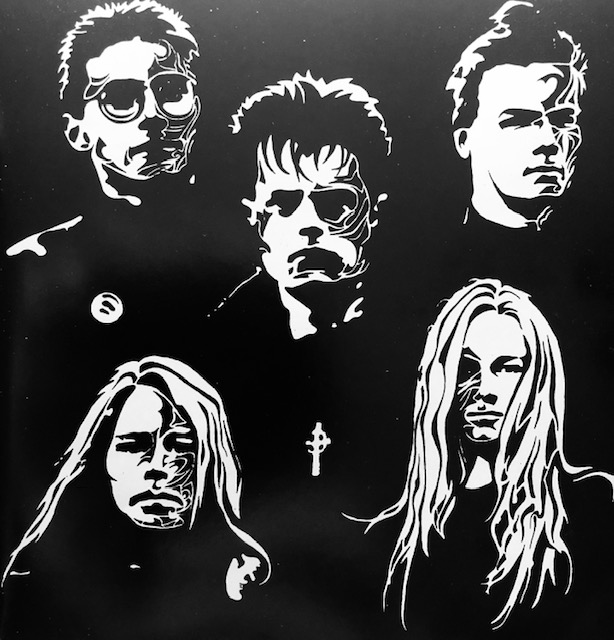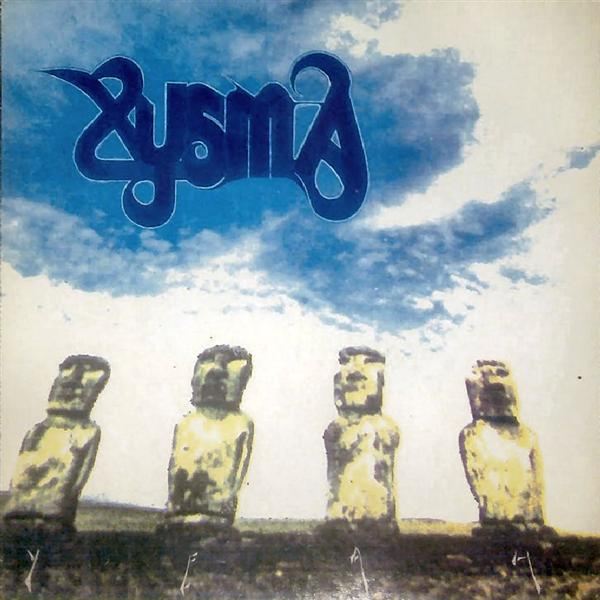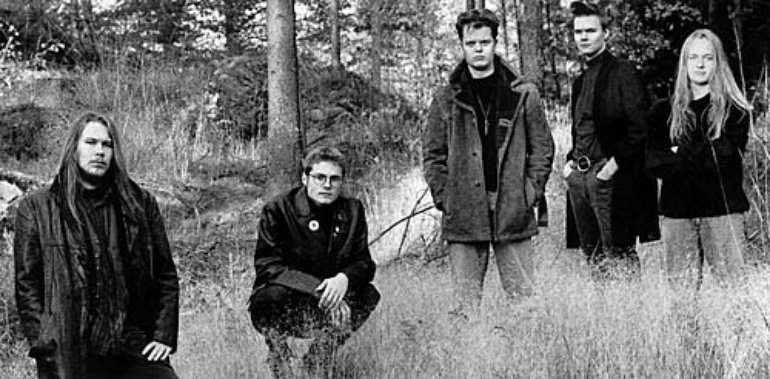
12 Nov Isten’s Mikko Mattila on Our Finnish Favorites, XYSMA
Boy, do we love us some Isten. Issues of the Finnish fanzine such as “Twin Sister” and “Madchen” are triumphs of underground literature. Its editor, Mikko Mattila, is a bit of a hero to us, and we have always appreciated and related to his love of the mighty Xysma. To coincide with Radical Research Episode 44 (“44th & Magical: Xysma 1989-1998”), we squeezed a few answers out of the Mighty Mattila. Put on your green gas station jacket and tangle yourself in these shreds…

Radical Research: To your mind, what about Xysma represents generic/stylistic tendencies within Finnish metal?
Mikko Mattila: If you absolutely insist on talking about music and nationality in the same breath, the Finnish bands that need to be mentioned alongside Xysma are Psychoplasma, Radiopuhelimet, and Circle. Maybe 22-Pistepirkko as well. These aren’t metal bands. Were Xysma a metal band? You can scrutinize the generic and stylistic tendencies of those who followed in Xysma’s footsteps, but Xysma were a law unto themselves. To me, they are a Voïvod or a Celtic Frost or a David Bowie. Or a Motörhead.
You’ve stated the effect and influence that Xysma has had on you over the years. To that end, do you think that your evolution as a listener and writer is contoured you Xysma’s evolution as a band?
Most certainly—Isten never wanted to be Morbid Mag or Slayer mag… I wanted us to have a true voice of our own. Xysma’s natural streak of independence struck a chord with me. They took their cues from Carcass, Napalm Death and Extreme Noise Terror but before you knew it, they completely defied categorization. Circa Lotto they had a vocalist in a gold lamé suit sipping from a lowball glass in front of the stage during the introduction, nodding, then joining the rest of the band on stage. Every tiny little thing was a solid artistic statement—like the smallish rainbow light fixture in front of the drums (this must’ve been around First & Magical or Deluxe)—and it did not seem pretentious. Ever since the early Nineties, I was always on the lookout for bands with SPIRIT and ORIGINALITY. Xysma had a big part in that. Part of why I didn’t want to write the liner notes for the Repulsive Morbidity box set is that I don’t want to be viewed as a guy from the band’s death/grind past. I lived through Xysma from the beginning till the end.
Within the Finnish metal world, how was Xysma’s development received? WE suspect that it was received favorably, considering the progress made by many other Finnish groups (e.g. Amorphis, Convulse, Disgrace, etc.)?
Again, it’s in no way limited to the metal world, although of course heavy metal is everywhere in Finland. I think Finland is the only place where they aren’t necessarily remembered as a metal band. They played a great number of absolutely amazing gigs here, and were appreciated by the alternative rock and pop crowds, rockers and punks alike. They had a healthy following in Finland and were tremendously influential here of course. For example Convulse switched styles overnight after being blown away by what Xysma were doing. Disgrace of course were in the extended Xysma family, the two bands rubbed off of each other. And with bands like Amorphis and Sentenced—I feel once we all had grown up a bit we shared a sense of “to hell and back with your expectations.” I don’t know how much of this feeling of freedom came from Xysma, but probably more than some people realize! The bands inspired by the bands who were originally inspired by Xysma are many. A young Taneli Jarva once vowed that Sentenced would never start “rocking”— then a couple of years later, in a letter for the advance tape of Amok, I believe, he quipped: “So much for those promises!”
In spite of having such defined identities, why do you think a number of Finland’s bands chose to record at Sunlight?
Well, it was only a ferry trip away, it was affordable, and of course the bands appreciated the quality of Swedish death metal albums and demo tapes—there were no producers or album-level studios in Finland that could deal with this type of music at the time. I remember Teje Caldén of Comeback Records (who released the mini-LP and the first two albums) was furious when the band didn’t even use up all the studio time when recording Yeah. They’d taken the previous ferry back home to Turku when the label guy got there. I talked to Mr. Caldén on the phone a couple of times around that time, and he was half excited and half terrified with the band’s change in direction. A 20-year-old Mattila assured him that the time was ripe for “death metal with a difference.”

Xysma’s music leads us to ask, what accounts for the restless nature of Finnish metal bands?
Once more, who cares about “metal” only? Ville Pirinen of the band Seremonia, himself one of the most avid Xysma fanatics in the world, said it best in our 2018 issue, “Churches”: “Maybe it has been easy for us who grew up with hardcore punk, Nineties Finnish alternative and Bad Vugum stuff NOT to ever confuse career and music. I think it’s one of the reasons Finland as a really small and remote country has produced so many of my all-time favorite bands. No need to compromise because there’s NO WAY to ‘make it big’ and no ‘business people’ to impress. I think this fundamental freedom is embedded in the philosophical structures behind every Radiopuhelimet, Circle, Räjäyttäjät or Janne Westerlund show. Or Xysma’s ‘career choices’.”
Dovetailing from there, would you consider Xysma a lodestar within the scene and, if so, why?
Xysma were always much too unique. Completely one-of-a-kind. People looked up to Xysma but they were always too odd and elusive for anything other than cult band status. You could emulate the music, copy the looks, but you’d still be nowhere close. It was their chemistry, their infectious groove, their sense of humor. You were trying to pin it down but they were someplace else already.
Did you get to know the guys in the band? If so, what about their personalities tells you, “yeah, they’ll be jumping from Napalm Death to The Sonics in 9 years.” We mean, was there something there, in the guys’ attitudes early on that indicated they’d be stretching the very limits of their style from one extreme to another?
I remember having spent some hours in the company of Janitor Muurinen (vocals) and Teppo Pulli (drums) the day after their first gig in Tampere. This was all the way back in November 1989. Even then it was obvious that their horizons were open for art in general and music in particular. For one thing, they sniggered at the editor of Suicidal Metal ‘zine who was a generic thrash metal guy who hadn’t changed a bit in years (which is probably, say, two years!) Maybe I felt like a generic thrash/death metal guy at the time, too!
Teppo and I were quill-friends for a couple of years, and he always seemed to me like—I don’t know—a free soul? He was never stuck in one style or genre, especially not metal. The same obviously goes for Janitor: he was a true artist, into Salvador Dalí and Olavi Virta, the king of Finnish tango. He’s a professional visual artist but apparently works on the docks in Turku these days, and probably still sings tango with his orchestra, Helge Kontio Populär.
Vesa Iitti, the original bass player, did this quirky little thing called Rotten zine together with Janitor and quickly became a connoisseur and explorer of esotericism and occult sciences and what not.
Olli Nurminen was Mr. Nice Guy in a green gas station jacket—a Kiss fan originally from a band called Picnic Kidney (I kid you not!) and always a class act on the six strings.
Toni Stranius who switched from Disgrace to Xysma came up with the spacey psychedelic things.
Kalle Taivainen on bass is the other visual artist in the band apart from Janitor—he came up with a lot of the concepts and designs.
They were all special. They were the real deal. They had the best riffs. I feel sorry for each and everyone of you who never managed to catch them live. The band had the best BOOGIE I’ve ever experienced. They gelled together, an ever-flowing stream of creativity. They were full of surprises, it was exciting as fuck—and none of it was forced, it was those extraordinary guys bringing their individual tastes, talents and energies to the table.


